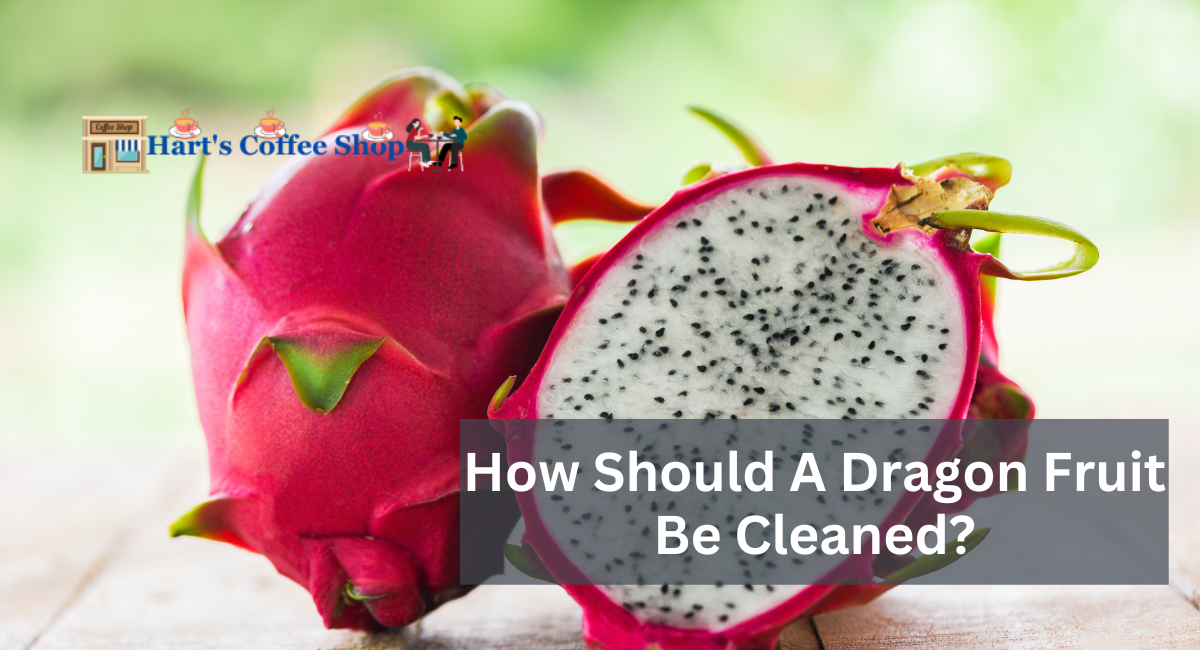With its dazzling appearance and delectable flavor, dragon fruit has captivated the attention of food enthusiasts worldwide. However, knowledge is required to access the vibrant, succulent flesh concealed beneath its unique exterior.
The purpose of this article is to elucidate the process of cleaning dragon fruit. From selecting the perfect fruit to mastering the intricate steps that reveal its luscious interior, we will guide you through the entire process to ensure that you appreciate the exotic flavors and vibrant colors of this tropical gem.
How Should A Dragon Fruit Be Cleaned?
Cleaning dragon fruit, also known as pitaya, is simple. Here is a step-by-step guide for preparing this exotic fruit for consumption:
1. Choose A Mature Dragon Fruit
Choose a dragon fruit that is ready to consume and ripe. Look for a healthy, uniformly colored epidermis. Typically, a mature dragon fruit is bright pink or yellow. It should yield slightly to mild squeezing pressure.
2. Rinse Dragon Fruit
Thoroughly rinse the dragon fruit under cool, running water. Scrub the skin with a soft brush or fingertips to remove dirt or residue.
3. Remove The Ends
The dragon fruit is placed on a chopping board. Using a sharp knife, trim the fruit’s top and bottom extremities. This will produce stable, level working surfaces.
4. Score Some Points
Make cuts along the length of the fruit’s epidermis, from the top to the bottom. Separate the incisions by approximately 1/2 inch. Carefully avoid cutting too deeply; you only want to score the epidermis, not the flesh.
5. Remove The Skin
Using your fingertips or a spoon, carefully separate the skin from the flesh. The scored section should facilitate this procedure. You will observe that the skin is comparatively simple to remove.
6. Cut Or Scoop The Meat
Now that the epidermis has been removed, the flesh can be sliced into the desired shapes. You can divide dragon fruit into rounds, cubes, or other desired shapes. Alternately, the interior can be scooped out with a spoon, much like a kiwi.
7. Examine For Seeds
Dragon fruit contains microscopic, black, edible seeds comparable to kiwi. Many people relish the roots, but if you prefer to remove them, you can do so with the tip of a knife or by gently separating them from the flesh with a spoon.
How Can You Determine If A Dragon Fruit Is Edible?
Consider the following aspects to determine if a dragon fruit is safe to eat:
Visual Examination
The dragon fruit’s skin should be vibrant and uniformly colored. The epidermis may be bright pink, red, yellow, or white, depending on the variety. Avoid dragon fruits whose skin is discolored, bruised, or wrinkly, as these characteristics may indicate deterioration or overripeness.
2. The Texture
Like a ripe avocado, a dragon fruit will yield slightly to mild pressure. It should feel neither too firm nor too soft.
3. Inside Visual Indicators
If you are still determining the grade of the fruit’s flesh, you should cut it open. Dragon fruit that is healthy to consume should have white or red meat with black seeds. The epidermis should be translucent rather than brown or discolored.
4. Check For Mold And Rot
Check the flesh for any signs of mold or decay. If you observe any, you should discard the fruit.
5. Sense Of Taste
Lastly, sample a small portion of the produce. Dragon fruit should be subtly sweet and faintly sour. If something tastes off or has an odd or disagreeable flavor, it may be unsafe to consume.
When Should Dragon Fruit Not Be Consumed?
There are several instances in which consuming dragon fruit is discouraged:
- Visible Mold or Rot Do not consume dragon fruit if it displays visible signs of mold, rot, or deterioration. Toxins can be produced by mold growth, making the fruit hazardous for consumption.
- If the dragon fruit emanates an odor that is unpleasant or off-putting, it may be spoiled or overripe. In such instances, it is best not to consume it.
- If the dragon fruit’s flesh is discolored, brown, or unusual, it may have deteriorated and should be thrown away.
- The surface of dragon fruit should be mildly dull but not mushy. If the fruit is overly mushy, it may be past its prime and unsafe to consume.
- If the dragon fruit has an unusual or disagreeable flavor, it is likely spoiled or past its prime. If something does not taste good, do not ingest it.
- If you suspect the dragon fruit has been treated with excessive chemicals or pesticides, you should avoid eating it. Choose fruit from organic or reputable sources to reduce the risk of chemical contamination.
Due to its striking appearance, cleaning a dragon fruit may be a challenging endeavor, but with the proper knowledge and technique, it becomes a simple and rewarding process. You can easily prepare this exotic fruit for your culinary creations or as a refreshing refreshment by following our step-by-step instructions.
Thanks for the read.
